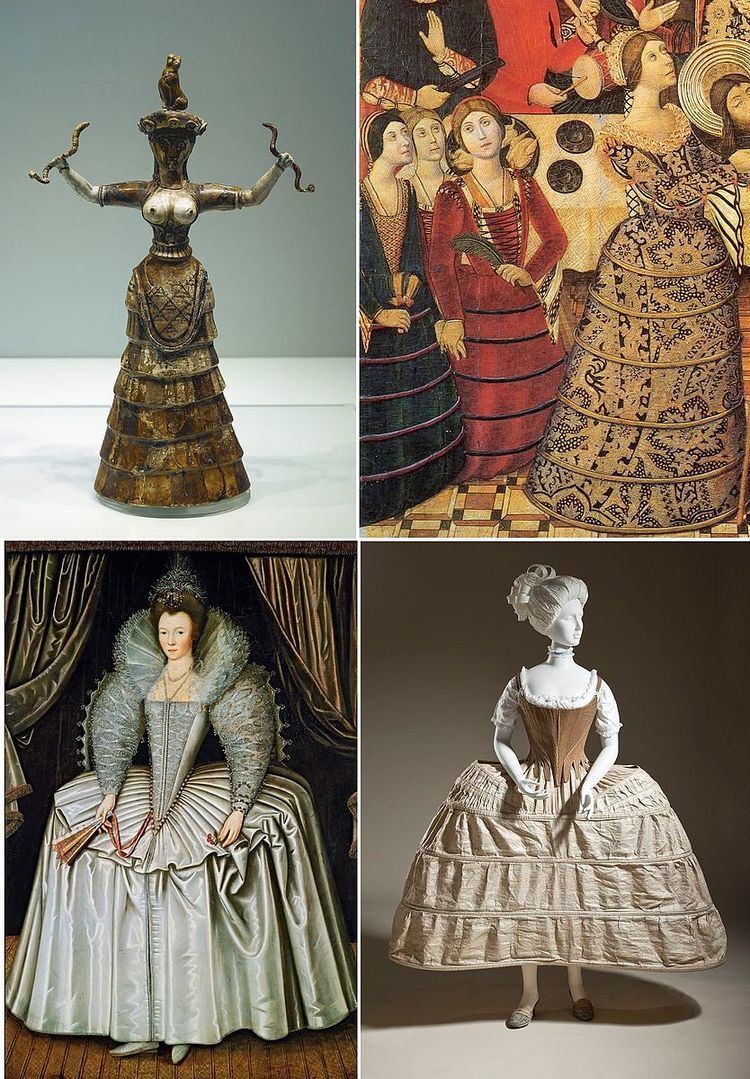 | ||
A hoop skirt or hoopskirt is a women's undergarment worn in various periods to hold the skirt extended into a fashionable shape. Its Tudor name was a 'farthingale'.
It originated as a modest-sized mechanism for holding long skirts away from one's legs, to stay cooler in hot climates and to keep from tripping on the skirt during various activities. Small hoops might be worn by farmers and while working in the garden. Hoops were then adopted as a fashion item, and the size and scale of the hoops grew in grandeur.
Hoop skirts typically consist of a fabric petticoat sewn with channels designed to act as casings for stiffening materials, variously rope, osiers, whalebone, steel, or, from the mid-20th century, nylon.
Hoop skirts are called by various names in different periods:
Lightweight hoop skirts, usually with nylon hoops, are worn today under very full-skirted wedding gowns. They can sometimes be seen in the gothic fashion scene. Reproduction hoop skirts are an essential part of living history costuming, including American Civil War reenactment.
